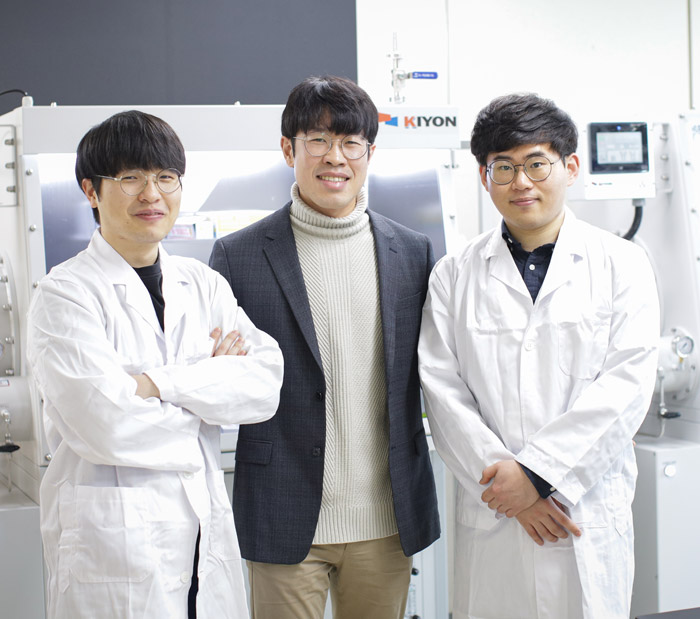Research Stories
Resolving instability issues of perovskite solar cells and LEDs
Successful development of core technologies to impede ion migration pathways in perovskite solar cells and light-emitting diodes (LED)
SKKU Advanced Institute of Nano Technology
Prof.
LEE, JIN WOOK
Resolving instability issues of perovskite solar cells and LEDs
Successful development of core technologies to impede ion migration pathways in perovskite solar cells and light-emitting diodes (LED)
Prof. Jin-Wook Lee`s research team in the SKKU Advanced Nano Technology (SAINT) and Department of Nano Engineering have successfully developed core technologies to significantly improve the stability of perovskite solar cell and LED devices. The 3 research papers associated with it were published in Advanced Materials (impact factor=25.809), which is ranked within top 2% among the international SCI journals.
Owing to the high efficiency comparable to silicon solar cells and organic LEDs, the perovskite solar cells and LEDs have been one of the strongest candidates for next-generation optoelectronic devices. However, operational stability of the devices was extremely poor compared to the commercialized devices.
The high density of ionic defects in the low temperature solution processed perovskite thin films tends to easily migrate under built-in or applied electric field during the device operation, rupturing perovskite and adjacent charge transporting layers. This ion migration was a critical issue to improve the operational stability of the perovskite optoelectronic devices.
Prof. Jin-Wook Lee`s research team developed core technologies to impede the ion migration pathways, resulting in significant improvement in operational stability of solar cell and LED devices.
Using these techniques, the lifetime of the solar cell was improved more than 9-fold from 222 h to 2011 h (Advanced Materials, 2020, 1906995) while that of LED was improved more than 1000-fold from 12 min to over 200 h (Advanced Materials, 2020, 32, 1905674).
Their technologies are expected to be a critical for commercialization of the perovskite optoelectronic properties by resolving the instability issue.
Meanwhile, the research team also developed a new technology to improve the performance of perovskite quantum dot solar cells, which is regarded as a future technology to surpass the thermodynamic limit of the solar cell efficiency (Advanced Materials, 2019, 31, 1900111).
※ Related Journals
1) Steric Impediment of Ion Migration Contributes to Improved Operational Stability of Perovskite Solar Cells, Advanced Materials, 2020, 1906995.
2) Surface‐2D_Bulk‐3D Heterophased Perovskite Nanograins for Long‐Term‐Stable Light‐Emitting Diodes - Advanced Materials, 2020, 32, 1905674. - Wiley Online Library
3) A Small‐Molecule “Charge Driver” enables Perovskite Quantum Dot Solar Cells with Efficiency Approaching 13%, Advanced Materials, 2019, 31, 1900111.


